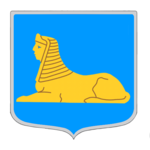This article may contain an excessive amount of intricate detail that may interest only a particular audience. (January 2021) |
| Military Intelligence Service | |
|---|---|
 MIS Unit insignia | |
| Active | 1941–1945 |
| Disbanded | 1946 |
| Country | United States |
| Branch | United States Army |
| Type | Military Intelligence |
| Role | Translation, interpretation, and interrogation |
| Size | 1,000 +/- |
| Garrison/HQ | Presidio of Monterey, Monterey, California |
| Nickname(s) | "Yankee Samurai" |
| Engagements | Guadalcanal, Buna–Gona, Attu, New Georgia, New Guinea, Bougainville, Tarawa, New Britain, Burma, Kwajalein, Admiralty Islands, Gilbert and Marshall Islands, Philippine Sea, Aitape–Wewak, Saipan, Peleliu, Leyte Gulf, Lingayen Gulf, Corregidor, Luzon, Iwo Jima, Okinawa, Occupation of Japan |
| Decorations | Presidential Unit Citation Meritorious Unit Commendation |
| Commanders | |
| Notable commanders | Col Kai Rasmussen Lt Col John F. Aiso |
| Insignia | |
| Branch insignia |  |
| Unofficial MISLS insignia |  |
The Military Intelligence Service (Japanese: アメリカ陸軍情報部,[1] America Rikugun Jōhōbu) was a World War II U.S. military unit consisting of two branches, the Japanese American unit (described here) and the German-Austrian unit based at Camp Ritchie, best known as the "Ritchie Boys". The unit described here was primarily composed of Nisei (second-generation Japanese Americans) who were trained as linguists. Graduates of the MIS language school (MISLS) were attached to other military units to provide translation, interpretation, and interrogation services.
"President Harry Truman called the Japanese Americans in the Military Intelligence Service (M.I.S.) the 'human secret weapon for the U.S. Armed Forces' against the Japanese in the Pacific. Major General Charles Willoughby said, 'The Nisei shortened the Pacific War by two years and saved possibly a million American lives.'"[2]
They served with the United States Army, Navy, and Marine Corps, as well as with British, Australian, New Zealand, Canadian, Chinese, and Indian combat units fighting the Japanese.[3][4]
General Hayes Adlai Kroner was Chief of MIS at the War Department for most of the War.[5]
- ^ MISアメリカ陸軍情報部 | NVL - Nisei Veterans Legacy
- ^ Shenkle, Kathryn (May 2006). "Patriots under Fire: Japanese Americans in World War II". Center of Military History, Department of the Army, United States Department of Defense.
- ^ McNaughton, James C. (2006). Nisei Linguists: Japanese Americans in the Military Intelligence Service During World War II (PDF). Government Printing Office. ISBN 978-1780390437.
- ^ Ichinokuchi, Tad (1988). John Aiso and the M.I.S.. MIS Club of Southern California.
- ^ Bigelow, Michael E. "A Short History of Army Intelligence" (PDF). U.S. Army Intelligence and Security Command.